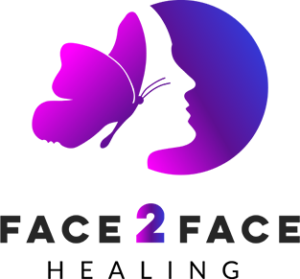I Got Injectable Fillers—and They Disfigured My Face. I’m on a mission to make sure this doesn’t happen to other women.
One of the reasons God left me here, I think, is so that I can share my cautionary story, so that no other women have to go through what I’ve gone through.
My name is Carol Bryan. I’m 54. I’ve worked in the aesthetic medical industry for years and consider myself very informed.
I starting getting Botox in my late 30s, just for the 11 lines you get between your eyes. I thought, “Why not?” I was very happy I did that. You don’t want to take drastic measures, and this was very subtle.
Then in 2009, when I was 47, doctors told me that at my age, I should try new fillers: Ones that would fill in the volume lost in my forehead and cheekbones. I knew it was safe, but what I didn’t know is that certain fillers are meant only for certain areas. (The FDA now has a definitive list of which cosmetic fillers are approved for which areas, and the risks associated with soft tissue fillers.)
During my procedure, two different fillers—one of which was silicone—were combined in the same syringe and injected into areas they shouldn’t have been.
I had the typical side effects, like bruising and swelling. You expect that, so you don’t get alarmed. But three months after the procedure, I was terrified of what I looked like. There was no sugarcoating it. I was told I’d need to have some corrective procedures, which I did, but those procedures just worsened the damage.
The result of the injections and corrective procedures, 2013
I never wanted to look at myself. I washed my face without looking. I brushed my hair without looking. I lived with a hat, a scarf, and glasses on.
I stopped all social interactions with my friends and family. I pushed most of the people in my life away. I just disappeared. I stopped answering calls and emails. I hid myself for over three years. I didn’t leave my house. I would just lock myself in my room. That’s when I began a lot of research and soul-searching and getting on my knees and praying. I wanted to believe everything was going to be OK, and I just had to be patient and trust God and trust that the corrective procedures would solve my circumstances.
“By three months after the procedure, I was terrified of what I looked like.”
But it was like internal torture. The worst part was the seclusion and knowing I couldn’t face the world again. That was not something I could wrap my head around. I felt like a pariah. I didn’t even think I’d survive it. I wasn’t planning to take my own life, but I just wasn’t sure how I was going to continue by secluding myself.
Then one day in 2013, my 21-year-old daughter walked into my room and said, “Mom, this is not OK. It’s not going to get better. This is catastrophic. You can’t fix this on your own.” Because of her, I decided I would not give up. She took photos of me and emailed them to all the teaching hospitals in the country, begging for help. UCLA is the only one that answered her email.
Reza Jarrahy, M.D., the co-director of the UCLA Craniofacial Clinic, was willing to see me. He had tears in his eyes when he asked me to tell him what happened. He said he would help me, even though he didn’t know how he was going to help me. He presented my case to a group of doctors, and one finally offered to help. That was Brian Boyd, M.D., a professor of surgery with the David Geffen School of Medicine at UCLA. There were risks with the surgeries they were planning, but I had no choice. My only other option was to tell my family to institutionalize me, anesthetize me, and come say hi to me once in a while. I knew I could not go out in that world with that face.
What had been done to me was so unprecedented that most doctors couldn’t just open a book to find out their options.
Jarrahy started in April 2013 by de-bulking my forehead. The foreign material—the fillers from 2009—had hardened and started pulling on tissues, causing the deformities. That first surgery left me blind in one eye, because part of the product had dislodged, pressed against the optic nerve, and causing loss of blood flow.
The next surgery was in October 2013, when Boyd said he was going to remove my forehead completely, down to the bone. “There’s nothing else we can do,” he told me. “We will find a place on your body to give us a sufficient amount of tissue that’s a close match to your skin color.” He didn’t want me to look like a patchwork. That surgery took 17 hours, using skin and tissue from my back, and was a huge success. But my forehead still protruded out.
The next surgery was in December 2013, to bring my forehead down to the level of my bone structure. Some areas of my upper forehead turned black—there was necrotic scarring—but it’s near my hairline, so it doesn’t show. I had two more surgeries in 2014 and another in July 2015.
The doctors want to do one more surgery, but I feel lucky. I could say, “This is enough.” I’m not expecting perfection. I know I will never look as I did, and I accept that. If I can get to the point where I can walk in the world again, and face the world without my glasses, that’s something.
I used to be one of those people who would look at people who were disfigured, then look away. It was never in a disgusted way, but it would hurt my heart, so I’d look away. Losing my own beauty and having to face the world this way, and having people look at me and find me offensive, makes me want to work tirelessly to make sure this never happens to anyone again.
“I know I will never look as I did, and I accept that.”
When I look back at all the pictures from before and after, I remember who I was and who I am now. I feel better now than I ever did before. I don’t have to live up to anyone’s expectations anymore.
As a survivor of this, I’ve become so much stronger and so much wiser. I can help people come out of that darkness. When someone goes through this, they need to hold on to the fact that they are valuable and need to love themselves. They need the courage to overcome the challenge.
As the West Coast Director of Face2Face Healing, Carol is working to educate the public in the perils of aesthetic medicine.




